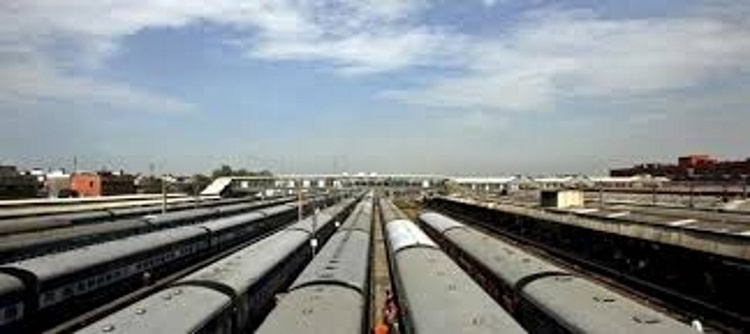
Suresh Prabhu, the minister of railways, is a man in a tearing hurry. For he has to make up for the lack of any significant addition over the last two decades to the infrastructure of this 65,000-km-long network. Successive railway ministers, given to populism, have announced hundreds of new trains at the annual Rail Budgets, unmindful of whether there was adequate track capacity to run them or not. Resultantly, over the last two decades, no less than 5,000 such new trains have been added, taking the total tally of passenger trains to nearly 9,000, whereas the addition to freight during this period has been less than 1,000 trains.
Moreover, most of the new passenger trains have been the superfast variety, on the lines of those started by the late Madhavrao Scindia, who introduced the concept of fast intercity trains such as the Shatabdi Express in the 1980s. Nitish Kumar as the railway minister introduced a slew of Sampark Kranti Express trains, Lalu Prasad Yadav had his brand of Garib Rath, while Mamata Banerjee did one better with the Duronto Express trains which ran non-stop from source to destination.
The overcrowded tracks, 60% of which now carry over 100% and some even 150% of their designed capacity, have resulted in the freight trains taking a severe hit, with the average speeds dropping to an abysmal 25kph, since the passenger trains are always accorded precedence over freight.
Simultaneously, the reluctance of ministers over the last two decades to announce any meaningful hike in passenger tariff to keep up with inflation has resulted in the passenger business being subsidised at the cost of freight, whose tariff was hiked regularly to keep the Indian Railways from going in the red.
The double whammy of low average speeds and the hike in tariff each year adversely impacted Indian Railways’ freight business. It has not been able to attract any significant volumes of new business and merrily carried on with annual increments in bulk commodities such as coal, iron ore, limestone, cement, food grains, petroleum products, etc.
The absence of assured timetable in the running of special parcel express trains, comparatively high tariff, and rigidity in rules and regulations have resulted in the lucrative parcel business eluding the railways and continuing to prefer road sector.
With financing of infrastructure projects being assured by insurance giant LIC, whom minister Prabhu persuaded to provide a Rs 1.5 lakh crore loan, the Indian Railways has now been on the fast track to undertake 70 capacity augmentation projects.
Mostly for converting single lines to double or double to triple wherever the volume of traffic has gone beyond 100% of designed capacity, projects sanctioned so far with a total length of 7,663.93-km and costing Rs 75,700.28 crore range from a short 1.82-km bypass line at Khurda Road in Odisha costing Rs 25.72 crore to doubling of the 467-km track of the Pune-Miraj-Londa section costing Rs 3,627 crore. Chhattisgarh government and South Eastern Coalfields have been roped in for a JV with Ircon to finance a 122-km-long new line from Gevra Road to Pendra Road costing Rs 4,949.28 crore for movement of coal.
The world over, for railways, freight is the breadwinner, with passenger services restricted mostly to fast intercity or commuter services. However, India has the unique distinction of having two-thirds of its trains carrying passengers which earn just one-third of its total revenue. Prabhu aims to correct this aberration by creating adequate infrastructure, offering fast, safe and cost-effective rail transport for freight, regaining Indian Railways’ role as the nation’s economic lifeline.
Two new corridors, dedicated to carry freight, have also been in the works for almost a decade. The Eastern Corridor, a 1,278-km-long Ludhiana-Son Nagar alignment parallel to the existing grand trunk route, would meet the growing demand for coal by thermal power plants in the North from collieries in the East.
The Western Corridor—1,504-km-long from Delhi (Dadri) to Mumbai (JNPT)—will help export-import trade and also cater to the proposed DMIC. Expected to be commissioned sometime by end-2020, it will offer assured timetable running of freight trains, typically completing the Dadri to JNPT run in 24 hours.
